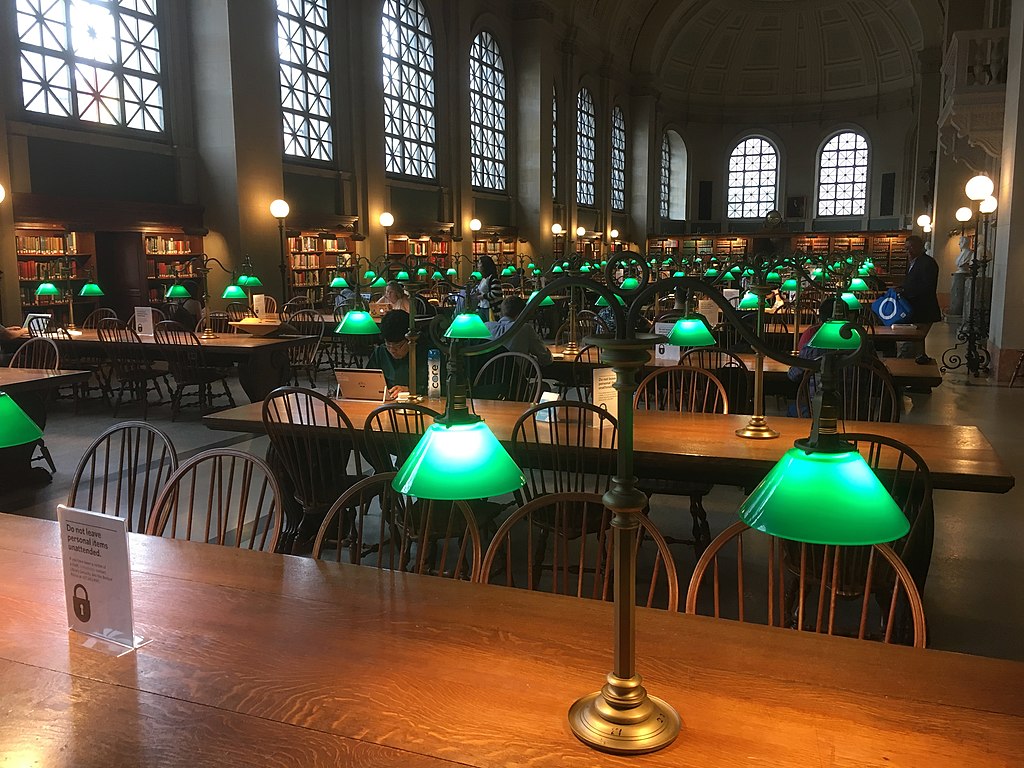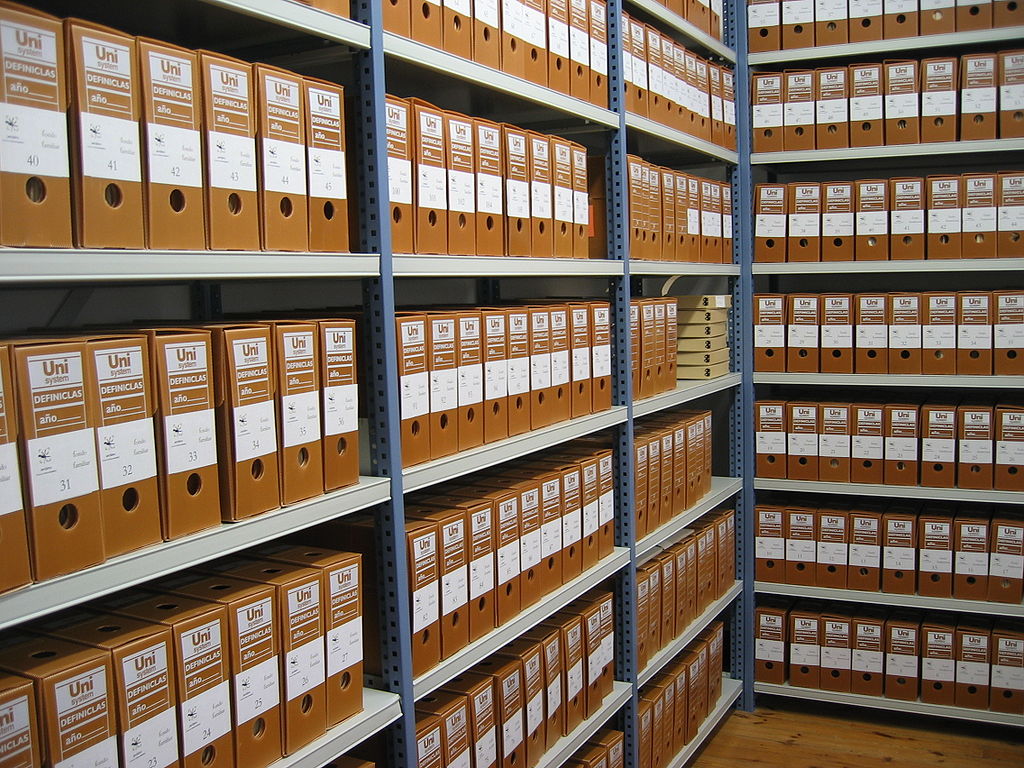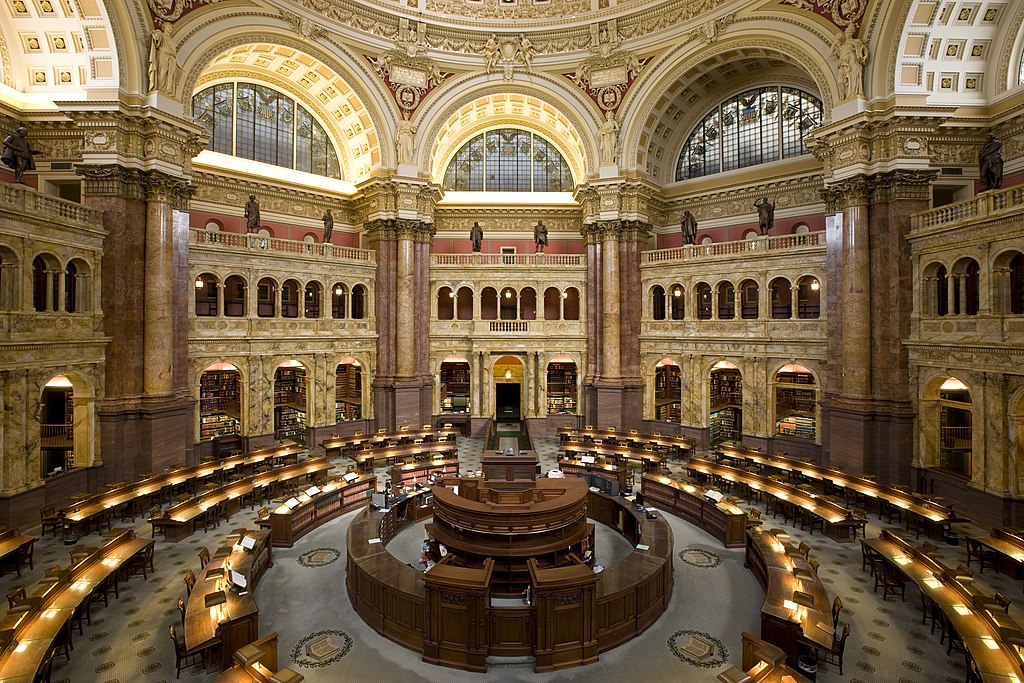11 Pathways into Libraries and Archives
Sofia Caruso
Many people who chose to go into the library and information science field have fond memories and nostalgia for their childhood experiences at libraries. We may remember interacting with the youth services librarians when we needed help finding books, or going to story times and other library programs. We may also remember interacting with librarians at school or in university, when trying to do research projects.
While these experiences are valuable and important in libraries, there are many types of library positions that are not forward-facing or do not interact much with the public, so those coming into the field may not realize just how many varieties of librarianship exist. Many people also do not realize that library and information science as a field also encompasses other types of libraries, not just public or school libraries.
This chapter discusses the type of roles within information institutions, such as libraries and archives, and how these roles differ based on the type of institution. The four categories used in this chapter are: user and access services, technical services, technology services, and administration. In practical experience, these four categories may have some overlap.
It is important, first, to define what makes libraries and archives differ from each other. Libraries, in general, hold collections of books in order to make these books, or other information resources, available for use by the communities they serve. While this can come in many forms, the primary goal of libraries is to provide access. Archives also exist for the purpose of access, but archival collections can hold unpublished materials, outside of the realm of books, and have special handling standards for materials, since much of it tends to be irreplaceable.[1]
Within these three broad categories of institutions, there are many different kinds of libraries and archives. Below is a chart showing examples of different institutions and their specific purposes.
| Libraries | Archives |
| Public libraries | Community archives |
| School libraries | University archives |
| University libraries | Government archives |
| Medical libraries | Historical societies |
| Law libraries | Corporate archives |
| Government libraries | Special collections[2] |
| National libraries | |
| Corporate libraries | |

ACCESS SERVICES
Access services, or user services, directly help patrons of information institutions find the information, resources, and services they need. This encompasses most public-facing roles in information institutions.
Libraries
Access services can manifest in libraries in many different ways, including reference services, circulation, interlibrary loan, [3], and library programming, among many other things. These duties are focused on providing access to library collections and other library resources to patrons.
Perhaps the most visible of these roles are at reference desks. Reference librarians help patrons with their information needs directly by assisting them in accessing library resources [4]. Reference librarians assist patrons with finding and checking out books, accessing online and digital resources the library may provide, and using other library services, such as programs or equipment like printers. Reference librarians often have special training on how best to interact with and help patrons [5].
At many libraries, especially smaller institutions, the reference desk may also function as the circulation desk where librarians or other library staff assist patrons with checking out books. In the modern age, many public libraries have utilized self-check out systems, but circulation also includes shelving books, pulling books for patrons, and processing book returns. While not all these responsibilities require directly interacting with patrons, they are all important parts of making sure a library functions and is properly providing access to patrons.
Many types of libraries, including public and academic libraries, participate in interlibrary loan services or are part of a library consortium. These services, which circulate books between different libraries and help bring books to patrons who may not have access to them at their home institution, are also a crucial part of providing access and user services to patrons.
Additionally, library programming and events can also fall under the umbrella of access services. Programs help bring patrons to the library and provide community and engagement for users of the libraries. Many library careers, from child to adult services, and even at institutions like academic libraries, require librarians to plan programs and events tailored to their communities. In public libraries, this can manifest as story times for children, crafting events, and book clubs, and in academic and school libraries, this can be programing to assist students in research or highlight interesting library collections.
Archives
Like libraries, access services in archives also include reference services and circulation. However, archives tend to be smaller than libraries, so archivists may be performing duties that fall under several different kinds of services at information institutions.
Additionally, reference services at archives may function differently, as researchers at archives may need specialized help from the archivists, rather than just looking for specific books. Reference archivists often work closely with researchers and patrons, and assist in research, to help find materials. This is a key part of access services in archives. Reference archivists need to have a specialized knowledge of the materials in the collection in order to best help researchers.
Circulation of materials also works differently in archives than in libraries; typically archives are non-circulating and do not allow patrons to take materials out of the archive facility as they require special handling. However, internal circulation is important in archives, when pulling materials for patrons, or reshelving them, as well as keeping track of where materials currently are within the institution.
Archives may also have events and programs, like libraries, but they can manifest differently. Archives may hold events to display new or interesting collections, plan programs for historical education, or give tours and demonstrations of these materials.

TECHNICAL SERVICES
Technical services encompasses “acquiring, organizing and preserving all kinds of library materials,” according to the American Library Association [6]. This includes tasks such as acquisitions, collection development, cataloging, and preservation, all of which are important in both libraries and archives.
Libraries
The key parts of technical services departments in libraries are acquisitions and collection development. Acquisitions is the purchasing of library materials, while collection development is the selection of that material. Technical services librarians must decide which books, or other resources, to purchase in order to best serve the patrons of the library. This includes purchasing newly released books, filling out a collection where there may be gaps, and weeding out material that is no longer relevant or useful to the patrons.
Collection development does overlap with access services to a degree, as the purpose of developing and managing a collection is to provide proper access to patrons, and requires first-hand knowledge of the patron base in order to determine what books might be appropriate. A children’s librarian needs to be familiar with current children’s literature, so the library can acquire the latest books, or to fill in collection gaps, such as when a library’s collection is lacking diversity, for example. A librarian at a specialized medical library needs to be familiar with current medical research and where it is being published, so they can make sure that information included in the library is correct and up-to-date to the science.
Cataloging is also an integral part of libraries’ functions. Cataloging librarians provide item descriptions for books and enter books into a library’s digital catalog. They also assign call numbers to books in whichever system their library uses, most commonly the Library of Congress system or the Dewey Decimal System, and make sure that these call numbers are consistent and appropriate for the topic matter of the book [7]. Cataloging is an important task as it adds the books, or other materials, to a library’s collection after the acquisition process, and makes the materials searchable by patrons and staff.
Archives
Like in libraries, acquisition of materials and collection development are very important in archives. Many archives have a specialized focus, such as the historical society for a town or archives for a government agency, so collection development is important in making sure that materials are relevant to the archive’s purpose. Additionally, while archives may purchase materials just like libraries, some archives may rely heavily on donation of materials or may receive materials from the organization that they serve, in the case of a university archive or a government archive, for example.
A major difference between libraries and archives is how materials are processed when they are received. While books at libraries need to be cataloged, archival processing works very differently. When an archive takes in new material, it will need to be processed by an archivist, where they will sort through the material and organize it. The purpose of processing is to make it easier for researchers to find specific information within the collection; sometimes this means that an archivist will leave materials in the original order in which they were purchased or donated, or they will rearrange materials entirely if it makes more sense to do so. An archivist may also create a finding aid for the material, which is a document that explains how the material is arranged. A finding aid can be on a box-level, explaining what is in each archival box, a folder-level, or an item-level, depending on how the material will need to be used.
Additionally, preservation of materials falls under technical services. Physical preservation of materials is not as important in libraries as it is in archives, because, in libraries, a torn-up book can usually just be replaced. However, special collections and rare book libraries will require preservation techniques for books that cannot be easily replaced or have historical value. Preservation and conservation of materials is particularly important in archives due to the irreplaceable nature of most archival material. Preservation can include repair to materials, measures taken to prevent mold or water damage, choosing the correct storage containers for materials while processing, and even disaster preparation[8]. Digital preservation, such as scanning material so that it can be made available online, is also important in archives as it both makes materials more accessible to patrons and creates a copy of materials in case something ever happens to the original.
Working in preservation and conservation often requires special training in areas like chemistry, which can be important in the preservation of paper objects. Additionally, not all archives have a dedicated preservation department; larger archives facilities, such as at large research universities, may have staff members dedicated to preservation work, but smaller archives may not.

TECHNOLOGY SERVICES
Technology services play an important part in libraries and archives in the modern age. These can overlap with technical services, but differ in that technology services focus on managing computer software, databases, IT support, and web design.
Most libraries and archives use collections management databases to keep track of their collections. These databases contain information about materials and circulation information, such as whether a library book is currently checked out. Collections management software can also be connected to a browser-based platform that patrons can access to browse through materials. Different types of institutions use different collections management software[9]. Archives may require that their software displays a finding aid or item-level information within a collection, while libraries often display subject headings on their catalog entries, so that patrons can find similar material. These databases are where catalogers input information about materials. Librarians and archivists who handle digital collections and cataloging may be responsible for managing their institution’s collections management software.
Digitization services may also fall under technology services, as libraries and archives must have a platform to display and share digitized materials. These can be available on the institution’s collections management platform, or another type of web-based digital repository.
IT support is also an information function in libraries and archives. Patrons and staff alike may have issues accessing digital services, so digital librarians and archivists must know how to help solve these problems. Most libraries also subscribe to research databases and other services, such as e-book and audiobook platforms. Some libraries now even have loanable technology, such as tablets or laptops that patrons can borrow. Patrons may have issues accessing these services, or may require assistance if they are not tech-savvy. Digital librarians require both strong communication and pedagogical skills in order to assist patrons with their technology needs [10].
ADMINISTRATION
Administration is the management of the operations of a library or archive. Administrators make important decisions and oversee institutions so that they are able to function. These decisions can include: choosing vendors for books, software and databases, and other materials; planning and overseeing budgets; supervising employees; and hiring staff. While library administrators, such as library directors, may not have much direct contact with patrons, their roles are still integral to the overall function of the library. Directors and other librarians in administrative roles must have strong communication and leadership skills, as well as considerable knowledge about their library or archive and the community it serves[11]. Director positions also require several years of experience prior to starting the role.
Small libraries and archives may have only a director, or even just one librarian in rural communities. In contrast, larger institutions will have several staff members in administration and leadership roles, to oversee different departments and other activities, such as outreach or human resources.
CONCLUSION
The purpose of this chapter was to explore different pathways within library and archival institutions, focusing on the broader categories of access services, technical services, technology services, and administration. There are many types of roles within these categories, and they can have large overlap as well, but this is a framework to understand the distinct tasks of librarians and archivists. There are various ways to approach librarianship, other than the stereotype of a librarian who sits at a reference desk or an archivist who spends all day looking at old documents.

- “What Are Archives and How Do They Differ from Libraries?” Society of American Archivists. https://www2.archivists.org/usingarchives/whatarearchives. ↵
- “Types of Archives” Society of American Archivists. https://www2.archivists.org/usingarchives/whatarearchives. ↵
- Association of College and Research Libraries. “A Framework for Access Services Librarianship: An Initiative Sponsored by the Association of College and Research Libraries’ Access Services Interest Group.” https://www.ala.org/acrl/sites/ala.org.acrl/files/content/standards/acrl_access_services_framework.pdf. ↵
- “Reference Librarian”, American Library Association, July 20, 2016.http://www.ala.org/educationcareers/libcareers/jobs/reference. ↵
- “Guidelines for Behavioral Performance of Reference and Information Service Providers”, American Library Association, September 29, 2008. http://www.ala.org/rusa/resources/guidelines/guidelinesbehavioral. ↵
- “Technical Services Librarian”, American Library Association, July 20, 2016. http://www.ala.org/educationcareers/libcareers/jobs/technical. ↵
- “Technical Services.” Encyclopædia Britannica. https://www.britannica.com/topic/library/Technical-services. ↵
- “Preservation.” Smithsonian Institution Archives, April 18, 2011. https://siarchives.si.edu/what-we-do/preservation. ↵
- Breeding, M. (2023). 2023 LIBRARY SYSTEMS REPORT: The advance of open systems. (cover story). American Libraries, 54(5), 20–31. ↵
- Tammaro, Anna Maria. “A Curriculum for Digital Librarians: A Reflection on the European Debate.” New library world. 108, no. 5/6 (2007): 229–246. ↵
- “What Library Directors Need to Know”, American Library Association, November 21, 2006. http://www.ala.org/educationcareers/careers/librarycareerssite/whatyouneeddirector. ↵



